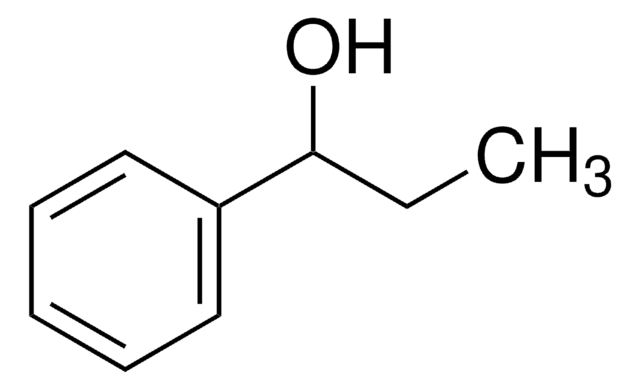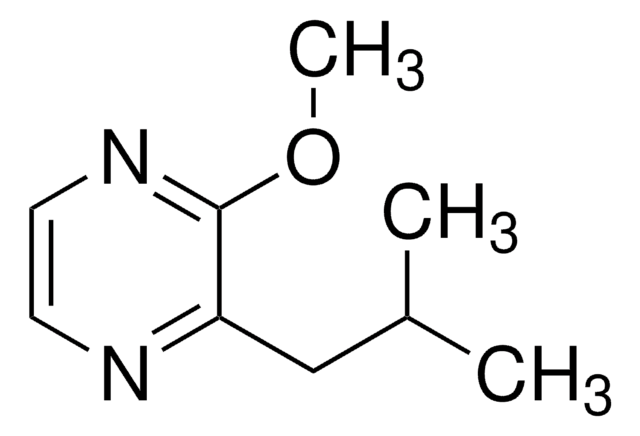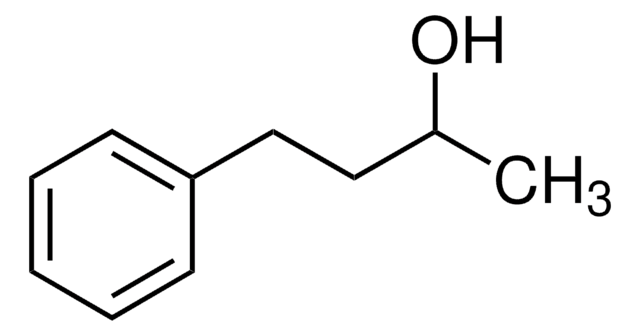W288500
3-Phenyl-1-propanol
≥98%, FCC
Sinonimo/i:
3-Phenylpropyl alcohol, Hydrocinnamyl alcohol
About This Item
Prodotti consigliati
Origine biologica
synthetic
agenzia
meets purity specifications of JECFA
Conformità normativa
FCC
FDA 21 CFR 172.515
Saggio
≥98%
Indice di rifrazione
n20/D 1.526 (lit.)
P. ebollizione
119-121 °C/12 mmHg (lit.)
Punto di fusione
−18 °C (lit.)
Densità
1.001 g/mL at 20 °C (lit.)
applicazioni
flavors and fragrances
Documentazione
see Safety & Documentation for available documents
Allergene alimentare
no known allergens
Organolettico
balsam; cinnamon; hyacinth; floral; spicy
Stringa SMILE
OCCCc1ccccc1
InChI
1S/C9H12O/c10-8-4-7-9-5-2-1-3-6-9/h1-3,5-6,10H,4,7-8H2
VAJVDSVGBWFCLW-UHFFFAOYSA-N
Cerchi prodotti simili? Visita Guida al confronto tra prodotti
Categorie correlate
Descrizione generale
Applicazioni
Esclusione di responsabilità
Avvertenze
Danger
Indicazioni di pericolo
Classi di pericolo
Eye Dam. 1 - Skin Corr. 1B
Codice della classe di stoccaggio
8A - Combustible corrosive hazardous materials
Classe di pericolosità dell'acqua (WGK)
WGK 3
Punto d’infiammabilità (°F)
248.0 °F - closed cup
Punto d’infiammabilità (°C)
120 °C - closed cup
Dispositivi di protezione individuale
Eyeshields, Gloves, type ABEK (EN14387) respirator filter
Scegli una delle versioni più recenti:
Possiedi già questo prodotto?
I documenti relativi ai prodotti acquistati recentemente sono disponibili nell’Archivio dei documenti.
I clienti hanno visto anche
Global Trade Item Number
| SKU | GTIN |
|---|---|
| W288500-10KG | 4061837846021 |
| W288500-1KG | 4061835566037 |
| W288500-5KG | 4061837846038 |
| W288500-SAMPLE | 4061837517556 |
Il team dei nostri ricercatori vanta grande esperienza in tutte le aree della ricerca quali Life Science, scienza dei materiali, sintesi chimica, cromatografia, discipline analitiche, ecc..
Contatta l'Assistenza Tecnica.













